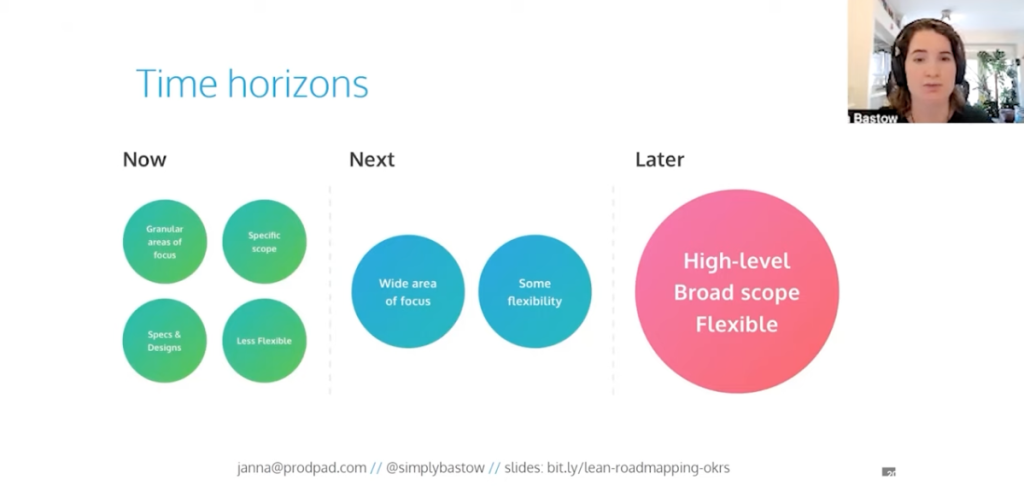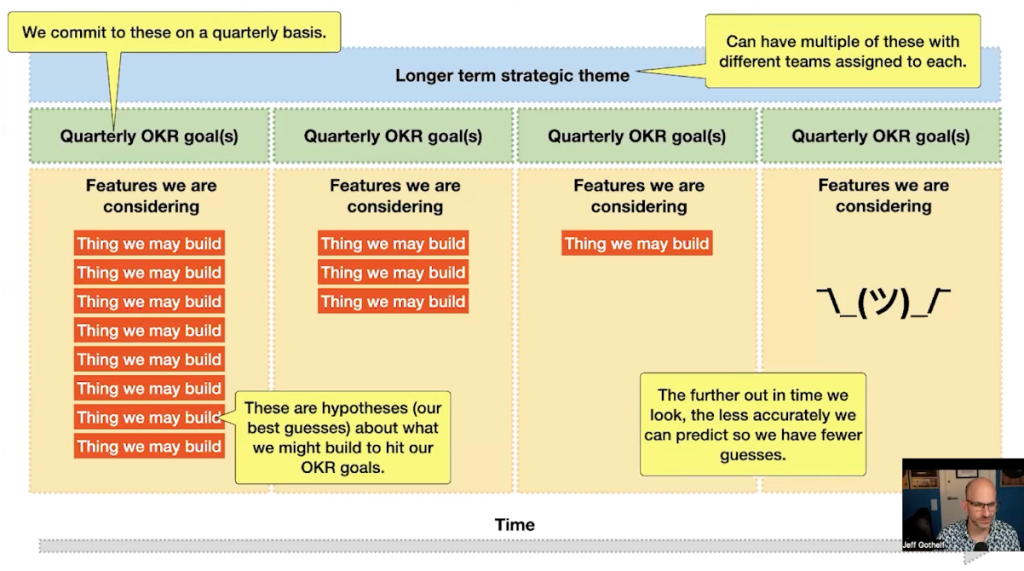
Navigating Complexity aka Cynefin for Dummies


Just a site where I archive interesting reads I've encountered online

Agile Bites is a new YouTube channel by agile coach Ferdinand Veldmans with bite size videos about agile concepts and tools.
The value is in roadmapping not in the roadmap itself
When you use roadmaps, you are making a number of assumptions:
What could possibly go wrong?
Vicious cycle: big buffers, slow work -> tighter controls, less freedom -> quality suffers, problems go unsolved -> blame culture -> repeat…
Your roadmap is a tool to help you learn and iterate at the product strategy level. In other words: Your roadmap is a prototype for your strategy.
Keep your roadmap simple!
My First Roadmap: Problem 1 -> Problem 2 -> Problem 3
Metaphor: Product is uncharted territory. Survey your surroundings, and what is at your disposal. Take one step at the time and map your journey on observations. Now -> Next -> Later.

Now: granular about your focus and scope. Stuff right in front of you
Later: less about spicific initiatives, outlining problems you think might need to be sovled to reach your vision.
The company sets top-level objectives (north star), and teams work together to decide how they can work towards this goal. Metaphor: get to Mordor: you can have my axe, bow, sword.
Objectives might be set on different levels. Some companies have more than one product, department, etc. E.g. Generic objectives, Pirate (ARRRR) objectives, etc.
Vision is essential too: FOR target customer, WHO statement of need or opportunity THE product name THAT key benefit, reason to buy UNLIKE primary competitive alternative OUR PRODUCT statement or primary differentiation.
Vision + Objectives + Time Horizons = Lean Roadmap
Objectives (what you need to achieve: improve overall health to avoid illness or injury) -> Initiatives (actions we need to take to get there: introduce regular exercise to schedule; refactor diet) -> Key results (what good looks like: lose 15 pounds by the end of the year; be able to touch toes without bending knees)
There are lots of paths forward, leave room for interpretation and creativity!
It’s not your job to have all the answers, it’s your job to ask the best questions!
(e.g. set a meal as a goal, not a steak). And don’t forget to build in room for validation. (validate what you have delivered)
“Roadmapping is a flawed concept in the age of Agile. Maps, by their definition, are linear, and we don’t build linear products and services anymore. We build continuous systems.”
The Outcome-Based Product Plan:

Objective overall, key results per quarter.
Jeff uses a nice fog metaphor to explain the focus of this way of working.
How to write your first OKR?
Outcome-based product planning explicitly requires teams to do product discovery!
Challenges to expect, and how to overcome them:
Some examples of measuring:
Also see the EBM Guide from scrum.org